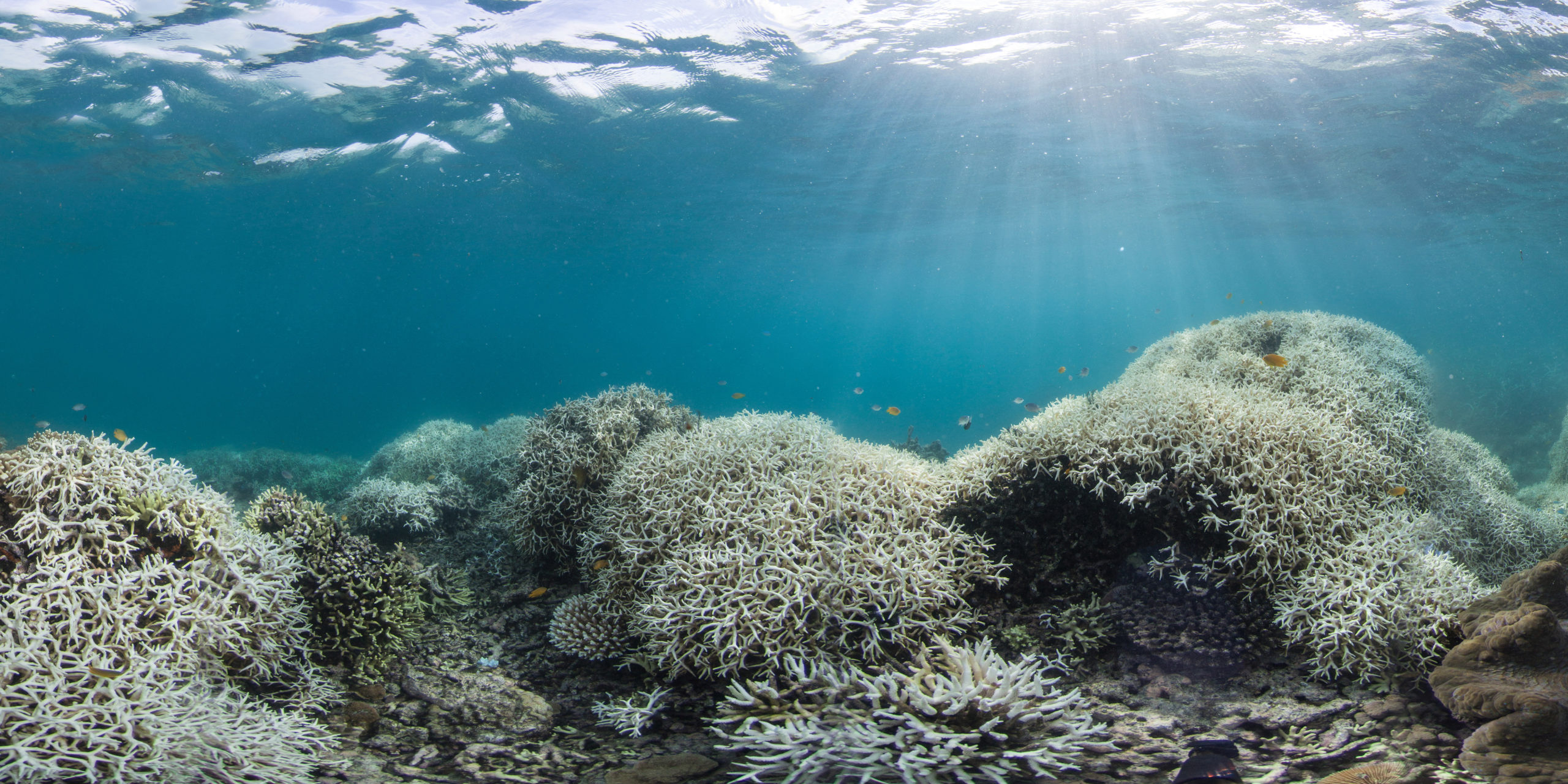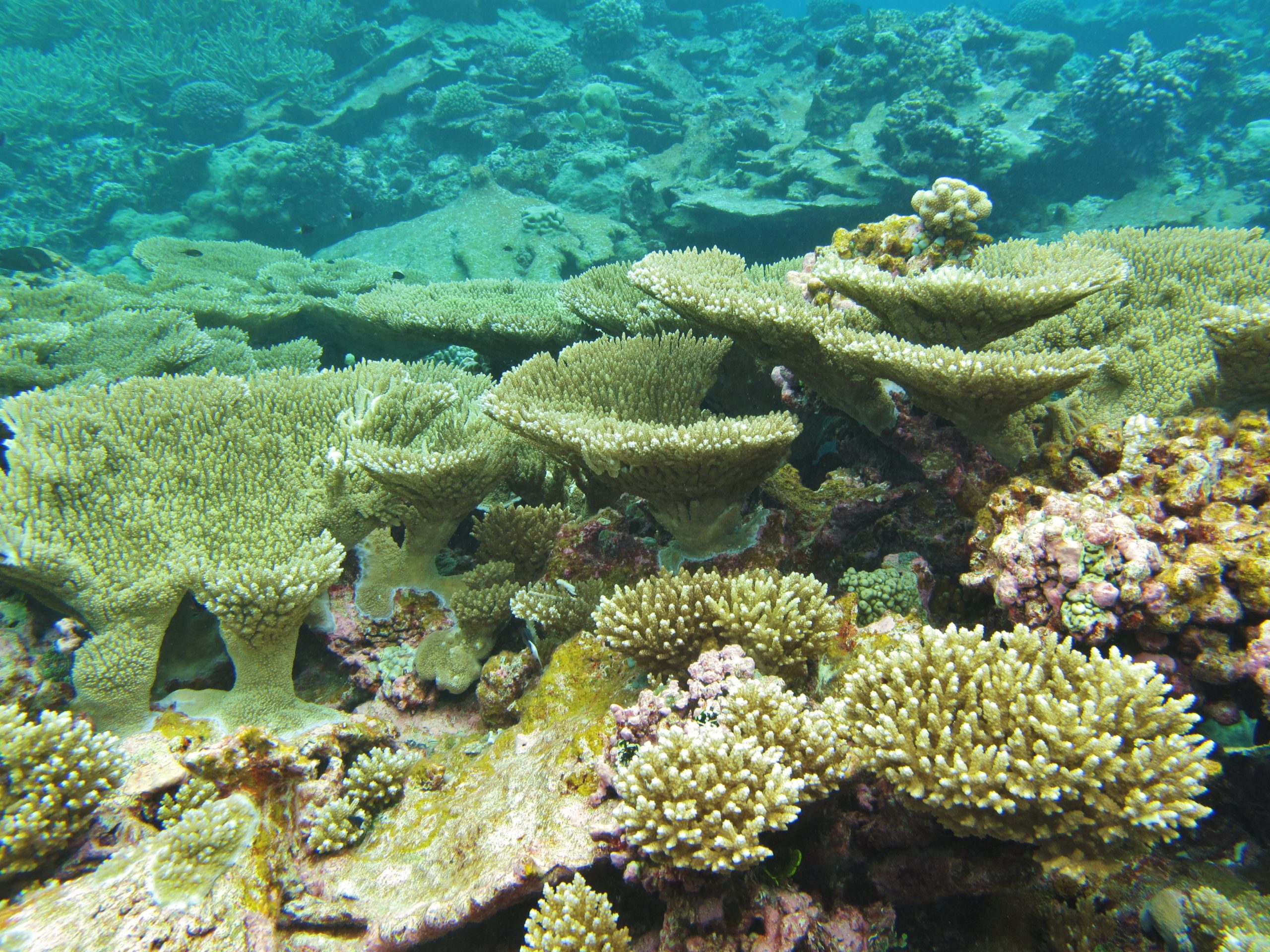
A plane flies low over a turquoise sea off the coast of Queensland in northern Australia. Below lies the largest reef in the world: the Great Barrier Reef (GBR). At first, I think—or maybe it’s hope—that the white patches are boulders or cresting wavelets. But as the plane flies on, their true identity becomes undeniably clear: these are bleached corals. And there are a lot of them.
As this video taken by researchers from the ARC Centre of Excellence for Coral Reef Studies makes clear, the GBR is in trouble. Reports indicate that up to 93 percent of corals in the northern part of the reef have bleached. But it’s not just the GBR that’s reporting bleaching: corals in the Indian Ocean, Caribbean, north and south Pacific, and coral triangle are all turning bone-white.

What does it mean to say that a coral is bleached? Corals get their colors from tiny algae that live within their tissues. These algae help corals grow by capturing energy from sunlight through photosynthesis. When waters get too warm for too long, these algae go into overdrive and their ramped up metabolism creates a toxic environment for corals. In response, the algae get kicked out, and the corals lose their color. Bleached corals aren’t necessarily dead corals, but the longer the bleaching continues, the lower the chance is that the corals will be able to recover.
The current bleaching in the GBR is part of the third recorded global bleaching event. It’s the result of a particularly strong El Niño occurring on top of already elevated global temperatures. Any single event is worrisome, but scientists are seeing an increase in the frequency of bleaching events. This means that corals don’t have the time they need to recover, and this has many people very worried. Only time will tell us how many—or how few—corals will survive this latest event.
I had been reading reports of bleaching from around the world for months before I saw that video, so I should have known what to expect. But those thousands of words had not prepared me for a minute-long video. Those of us in conservation like to joke that we are trying really hard to put ourselves out of work. How great would it be if coral reefs no longer needed our help? I have never been so saddened by job security than when I saw all those bleached corals. We have a lot of work still to do.
So what can we do? We can reduce local threats to reefs—such as overfishing and water pollution—so that reefs have ‘breathing room’ to recover from disturbances like bleaching. We can urge our politicians to take action on climate change. And we can find ways to support the many communities around the world that are working to protect coral reefs, one of the most wondrous ecosystems on earth.

